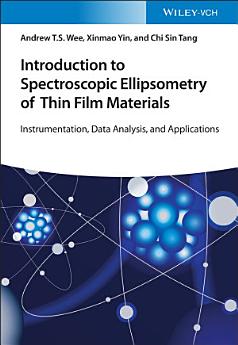Introduction to Spectroscopic Ellipsometry of Thin Film Materials: Instrumentation, Data Analysis, and Applications
Über dieses E-Book
In Introduction to Spectroscopic Ellipsometry of Thin Film Materials: Instrumentation, Data Analysis and Applications, a team of eminent researchers delivers an incisive exploration of how the traditional experimental technique of spectroscopic ellipsometry is used to characterize the intrinsic properties of novel materials. The book focuses on the scientifically and technologically important two-dimensional transition metal dichalcogenides (2D-TMDs), magnetic oxides like manganite materials, and unconventional superconductors, including copper oxide systems.
The distinguished authors discuss the characterization of properties, like electronic structures, interfacial properties, and the consequent quasiparticle dynamics in novel quantum materials. Along with illustrative and specific case studies on how spectroscopic ellipsometry is used to study the optical and quasiparticle properties of novel systems, the book includes:
- Thorough introductions to the basic principles of spectroscopic ellipsometry and strongly correlated systems, including copper oxides and manganites
- Comprehensive explorations of two-dimensional transition metal dichalcogenides
- Practical discussions of single layer graphene systems and nickelate systems
- In-depth examinations of potential future developments and applications of spectroscopic ellipsometry
Perfect for master’s- and PhD-level students in physics and chemistry, Introduction to Spectroscopic Ellipsometry of Thin Film Materials will also earn a place in the libraries of those studying materials science seeking a one-stop reference for the applications of spectroscopic ellipsometry to novel developed materials.
Autoren-Profil
Andrew T.S. Wee, DPhil, is Professor of Physics and Director of the Surface Science Laboratory at the National University of Singapore (NUS). His research is focused on surface and nanoscale science, scanning tunnelling microscopy, and synchrotron radiation studies of the molecule-substrate interface.
Xinmao Yin, PhD, is Professor of Physics at the Shanghai University, China. His research is focused on quantum materials and broad energy range optical spectroscopic techniques.
Chi Sin Tang is scientist at the Institute of Materials Research and Engineering, Agency for Science Technology and Research (A*STAR), Singapore. His research is focused on the electronic and optical properties of low-dimensional materials.




